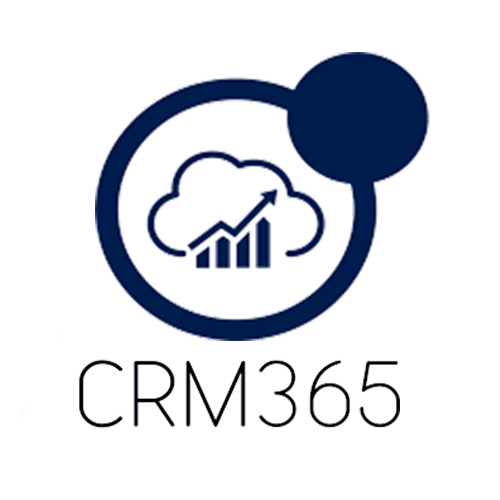In the rapidly evolving landscape of email marketing, one of the most impactful strategies is micro-targeted personalization. This approach enables brands to deliver highly relevant content to individual segments or even specific customers, significantly increasing engagement, conversion rates, and customer loyalty. However, implementing such a granular level of personalization requires a nuanced understanding of data management, advanced segmentation techniques, and sophisticated automation infrastructure. This article provides a comprehensive, step-by-step guide to help marketers and technical teams execute effective micro-targeted email personalization, moving beyond basic tactics to a strategic, data-driven methodology.
Table of Contents
- 1. Data Collection and Segmentation for Micro-Targeted Personalization
- 2. Crafting Precise Customer Profiles for Email Personalization
- 3. Developing Advanced Personalization Rules and Logic
- 4. Technical Implementation: Setting Up the Infrastructure
- 5. Practical Techniques for Fine-Tuning Personalization
- 6. Common Pitfalls and How to Avoid Them
- 7. Case Study: Step-by-Step Implementation in Retail
- 8. Summary: Delivering Value Through Precise Micro-Targeted Personalization
1. Data Collection and Segmentation for Micro-Targeted Personalization
a) Identifying High-Quality Data Sources
To build effective micro-segments, start by consolidating diverse, high-quality data sources. Key sources include:
- Customer Relationship Management (CRM) Systems: Extract detailed contact info, preferences, and lifecycle data.
- Behavioral Data: Track website interactions, email opens/clicks, app usage, and engagement patterns.
- Purchase History: Analyze transaction records, frequency, recency, and product categories.
Expert Tip: Integrate data sources via robust APIs and ensure your data warehouse supports real-time syncing to minimize latency and maximize personalization relevance.
b) Segmenting Audiences with Granular Criteria
Effective micro-targeting hinges on creating highly specific segments. Move beyond broad demographics by applying multi-dimensional criteria:
- Demographics: Age, gender, location, occupation, income level.
- Engagement Levels: Frequency of interactions, responsiveness to campaigns, time since last engagement.
- Purchase Intent & Behavior: Browsing patterns, cart activity, wish list additions, product views.
| Criterion | Segmentation Strategy |
|---|---|
| Location | Send localized offers based on ZIP code or city. |
| Engagement Frequency | Target highly engaged users with exclusive previews. |
| Purchase Stage | Differentiate between new, returning, and loyal customers for tailored messaging. |
c) Ensuring Data Privacy and Compliance
Respect privacy laws such as GDPR and CCPA during data collection and segmentation. Practical steps include:
- Explicit Consent: Obtain clear opt-in consent for data collection and personalized communications.
- Data Minimization: Collect only data necessary for personalization purposes.
- Secure Storage: Encrypt sensitive data and restrict access to authorized personnel.
- Transparency & Control: Provide easy options for users to view, modify, or delete their data.
Pro Tip: Regularly audit your data practices and update privacy policies to stay compliant and build customer trust.
2. Crafting Precise Customer Profiles for Email Personalization
a) Building Dynamic Customer Personas Based on Data Insights
Transform segmented data into actionable customer personas by combining demographic, behavioral, and transactional insights. For example, create a ‘Tech-Savvy Young Professional’ persona with attributes such as age 25-35, high engagement with new gadgets, and recent browsing of electronics.
Use data visualization tools like Tableau or Power BI to map out these personas, and regularly update them as new data flows in. This dynamic approach ensures your personalization remains relevant and evolving.
b) Incorporating Behavioral Triggers into Profiles
Enhance customer profiles by embedding behavioral triggers such as:
- Site Visits & Page Views: Track frequency and categories viewed to infer interests.
- Cart Abandonment: Flag users who add items to cart but do not purchase within a specified timeframe.
- Email Interactions: Log open and click behavior to refine preferences.
Expert Tip: Use real-time event tracking with tools like Segment or Tealium to update profiles instantly, enabling timely, relevant email triggers.
c) Using AI and Machine Learning to Enhance Profile Accuracy and Predictive Power
Leverage AI algorithms to analyze complex data patterns, predict future behaviors, and dynamically adjust customer profiles. Techniques include:
- Clustering Algorithms: Segment users into micro-groups based on similarity, refining personalization.
- Predictive Modeling: Forecast likelihood of purchase, churn risk, or content engagement.
- Natural Language Processing (NLP): Analyze email and website content interactions to gauge sentiment and preferences.
Pro Tip: Invest in platforms like Salesforce Einstein or Adobe Sensei that integrate AI capabilities directly into your marketing stack for seamless profile enhancement.
3. Developing Advanced Personalization Rules and Logic
a) Creating Conditional Content Blocks Based on Micro-Segments
Design email templates with dynamic content modules that adapt based on the recipient’s micro-segment. For example, a fashion retailer might show different product recommendations for ‘Urban Athletes’ versus ‘Luxury Shoppers.’
Implementation steps include:
- Define content variants for each micro-segment.
- Use your ESP’s dynamic content features or custom scripting (e.g., Liquid, AMPscript) to insert conditional logic.
- Test thoroughly across devices and segments.
Expert Tip: Maintain a content variation matrix in a shared document to ensure consistency and facilitate updates across campaigns.
b) Setting Up Real-Time Triggered Email Flows
Automate email flows triggered by specific user actions or lifecycle stages to enhance relevance. Examples include:
- Post-Interaction: Send a thank-you email immediately after a purchase or form fill.
- Lifecycle Stage: Trigger re-engagement campaigns for dormant users or VIP offers for loyal customers.
Configure these flows within your ESP or marketing automation platform using event-based triggers and conditional logic. Ensure your system supports real-time data updates for maximum accuracy.
Pro Tip: Use webhook integrations to instantly update customer profiles upon user actions on your website or app, enabling immediate personalization in subsequent emails.
c) Implementing Multi-Variable Personalization
Combine multiple data points to craft hyper-relevant content. For example, recommend products based on location, time of day, and previous browsing history. This can be achieved through:
- Using dynamic placeholders in email templates that pull in variables like
{location},{time_of_day}, and{product_recommendation}. - Applying conditional logic to alter messaging based on combinations of criteria (e.g., «Good morning, {name}! Check out these deals in {location}.»)
Test different variable combinations via multivariate testing to identify the most effective personalization matrix.
Expert Tip: Use machine learning models to analyze engagement data and automatically optimize variable combinations for future campaigns.
4. Technical Implementation: Setting Up the Infrastructure
a) Integrating Email Marketing Platforms with Data Management Systems
Achieve seamless data flow by connecting your ESP (e.g., Mailchimp, Salesforce Marketing Cloud, Klaviyo) with your data warehouse or CDP (Customer Data Platform) via APIs or connectors. Implementation steps include:
- Use RESTful APIs or pre-built connectors to sync customer data in real-time.
- Establish data validation routines to prevent errors during sync.
- Set up data transformation pipelines to standardize data formats (e.g., JSON, XML).
b) Configuring Dynamic Content Modules in Email Templates
Utilize your ESP’s dynamic content features or custom scripting languages like Liquid (Shopify), AMPscript (Salesforce), or MJML to embed conditional content. Actionable steps:
- Define content blocks for each micro-segment.
- Insert conditional tags that evaluate profile attributes (e.g., {% if segment == ‘tech_enthusiast’ %}…{% endif %}).
- Test variations





